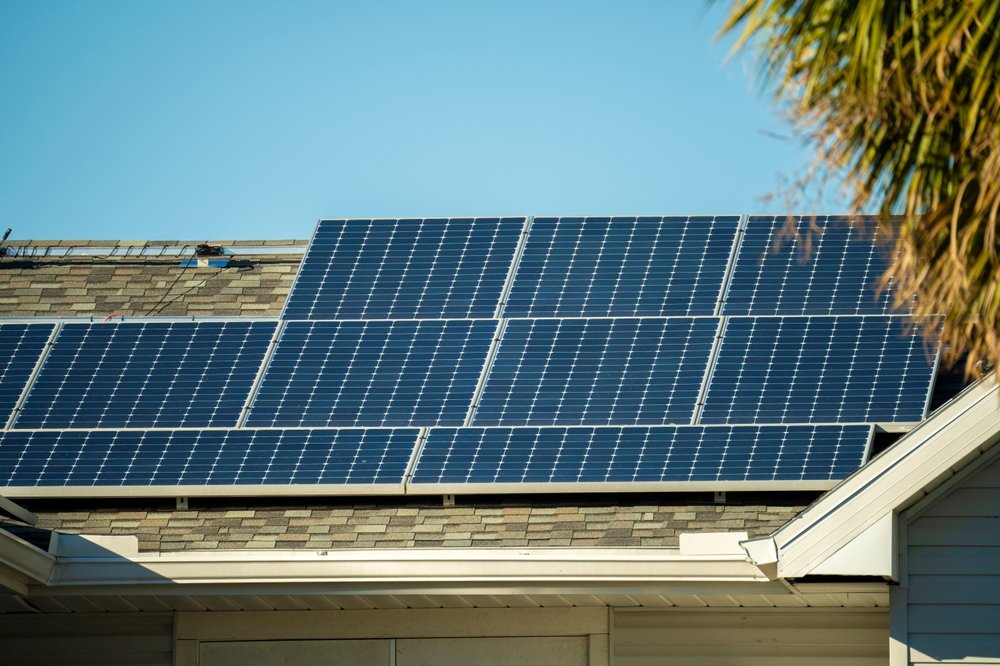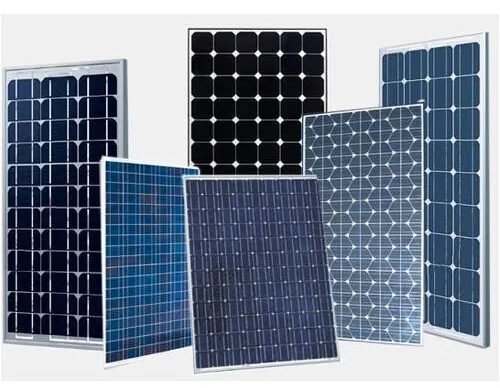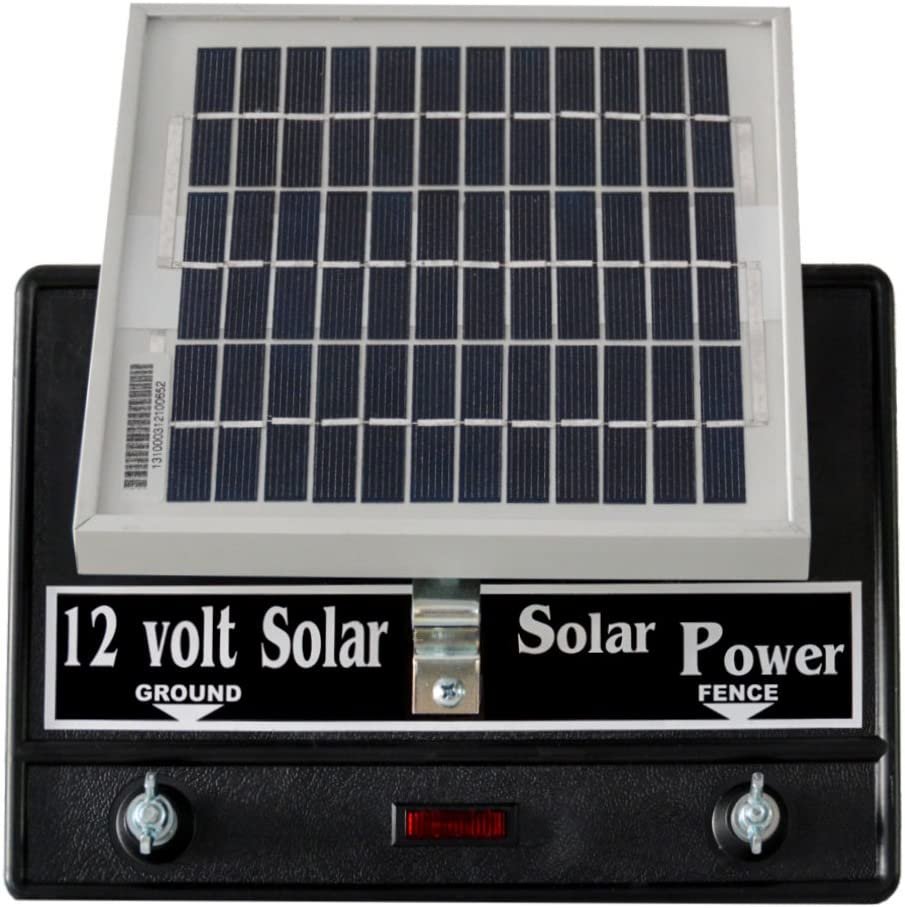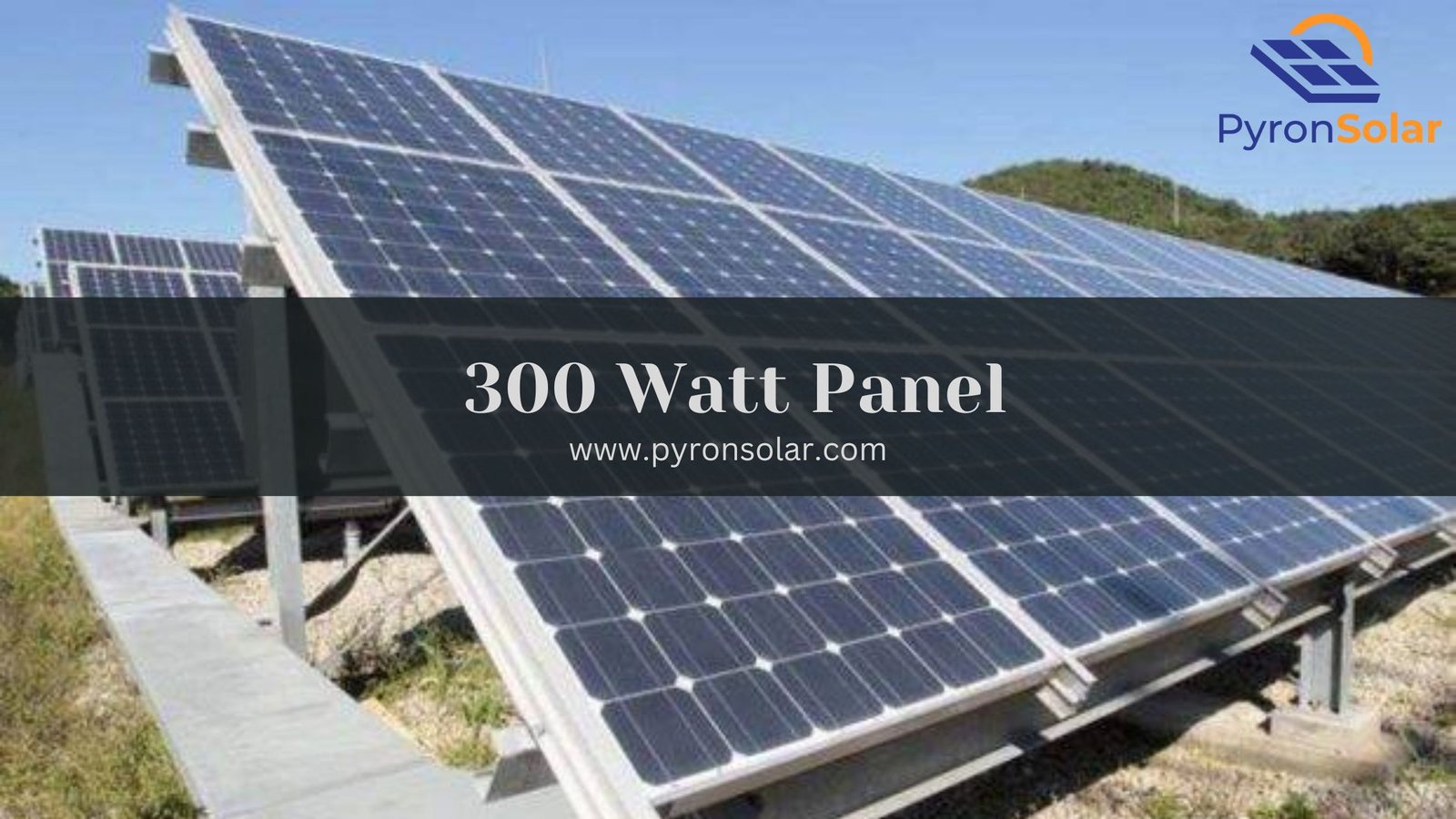The solar panels generate an electric current when sunlight strikes them. An electric field is produced by the positive and negative layers found in solar panels.
A charge controller that regulates the amount of electricity going to a battery receives the current generated by solar panels. The overcharging of batteries is avoided by using charge controllers. Additionally, they can shut down a system if the energy reserve falls below 50%.
DC power is generated and stored by batteries. An inverter converts DC power into AC power using AC gadgets like microwaves, computers, and phone chargers.
How Much Power Can a 300 Watt Solar Panel Produce?

Are you curious about the amount of power a 300-watt solar panel will produce? Calculating the amount of power could seem simple because electricity is measured in watt-hours. For instance, if I use a 300-watt solar panel, it will generate 300 watt hours of electricity when it runs continuously for an hour. While in an ideal world and under ideal conditions, the number of watt-hours produced will likely be less due to various considerations.
What Can a 300 Watt Solar Panel Run?
If a 300 watt solar panel is exposed to sunshine for 8 hours daily, it will produce almost 2.5 kilowatt-hours daily. This equals an annual solar output of roughly 900 kilowatt-hours when divided by 365. Each panel will annually generate 900 kilowatt-hours.
Even after considering all possible circumstances, some appliances and gadgets, such as laptops, LED lights, stereos, and TVs, may be operated efficiently using 300-watt solar panels.
The solar panels which make up the solar array used to power a house or company are typically 300 watts in size. You’ll need some panels to produce adequate power, and the precise amount depends on your home’s size and energy usage.
What are the Major Uses For a 300 Watt Solar Panel?
The maximum available power for a solar panel in the ever-evolving industry today is around 400 watts. Therefore, a 300-watt solar panel is still at the higher end of the range of solar panel sizes that are accessible. They are often not fairly powerful but are also typically manageable in size and reasonably priced.
Size of A 300 Watt Solar Panel

As they are large enough to produce enough electricity to power a home fully, 300 Watt solar panels are considered standard rooftop panels. They measure roughly 5-5.5 feet long and 3-3.5 feet wide, making them the same size as a conventional household solar panel.
Advantages and Disadvantages of 300 Watt Solar Panel
Advantages
There are many advantages to installing 300-watt solar panels. These are the most significant ones:
- A key advantage of a 300-watt solar panel is its relatively lower initial cost.
- A reduction in your electricity bills is another advantage. It can reduce your utility expenditures for domestic
- applications thanks to the solar power your solar panels provide.
- A decrease in carbon emissions is another important advantage.
Disadvantages
Along with the significant advantages, 300 W solar panels also have drawbacks.
- The Sun will not be at the best angle in the morning or the evening, and the solar panels won’t produce energy as efficiently.
- A 300-watt solar panel is a fantastic renewable energy source, but its effectiveness decreases when it’s cloudy.
- Along with the significant advantages, 300 W solar panels also have disadvantages.
- Since the Sun will not be at the best angle in the morning or the evening, the solar panels won’t produce energy as efficiently.
- A 300-watt solar panel is a fantastic renewable energy source, but its effectiveness decreases when it’s cloudy.
- Even so, the advantages outweigh the drawbacks, and since solar power is the way of the future for mankind, there is no substitute for a solar system.
Things to Consider When Purchasing a 300-Watt Solar Panel
The solar panel of 300 watts One of the best investments for a home is 12 volts. And before making a long-term commitment, you should consider a means to receive your money’s worth, just like with any investment. Costs for solar systems, 300-watt solar panels, etc.
The Significance of Panel Voltage
Solar panel voltage is unimportant for household grid-connected solar systems. In an off-grid situation, panel voltage only enters the picture when dealing with batteries. 12, 24, or 48 volts is the standard voltage for most batteries. What is known as a “charge controller” is what most off-grid systems will now have.

A solar charge controller decreases the voltage and amps to the battery’s rated voltage. Additionally, the charge controller prevents your batteries from being overcharged, significantly shortening their lifespan.
What Factors Affect the Output of a Solar Panel?
Solar panels’ output will always vary since many erratic internal and external factors strongly influence it. This comprises:
Blazing sunlight- The amount of solar output will vary if a tree or cloud casts full or partial shade onto your solar panel.
Panel performance- Your chosen solar panel’s brand and model will each have a different efficiency value. More usable power from sunlight can be converted by models with high-efficiency ratings in a shorter time than those with lower-efficiency ratings.
The span of a panel- A solar panel’s total system efficiency gradually declines as it becomes older. Most manufacturers provide a 20–25 year warranty on the efficiency of their solar panels. The lifespan of your system greatly depends on your ability to predict how well your panel will perform in the future.
Date and time- The best time to see the Sun is between 9 AM and 4 PM. Panels won’t generate as much electricity in the morning or evening whenever the Sun is at an angle.
Temperature- It’s crucial to find solar panels made for your region’s environment. Solar panels have been observed to function more effectively in colder climates, similar to other electronics.
Do Solar Panels Function in Cloudy Conditions?
Solar panels generate about 25% as much electricity in cloudy conditions as in sunny ones. In addition, contrary to popular assumptions, solar panels perform better in colder areas than they do in warmer ones. Your 300-watt solar panel will generate 300 watts of power when used in a 25°C environment. At lower temperatures, it can produce more at its peak.
It’s crucial to consider the potential effects of solar panel positioning. Because they need to be in an area where the light can reach them without obstruction, homeowners frequently install solar panels on roofs.
Solar panels are frequently mounted on poles in more rural areas, such as cottages. One major advantage is that it may frequently turn these systems to follow the Sun for the best potential power generation. Choosing the proper angle is crucial, but even very small alterations barely affect how much energy is produced.
A 500-Watt Solar Panel Can Power What?
Assume that each solar panel on your rooftop receives about 8 hours of sunlight daily. A 500-watt panel will generate roughly 4 kilowatt-hours per day if it receives 8 hours of sunlight daily. This results in an annual solar output of roughly 1460 kilowatt-hours when multiplied by 365 days. Each panel will produce 1460 kilowatt-hours yearly.

By purchasing a mix of larger panels, you may fulfill the demands of more energy-hungry appliances, including refrigerators, stoves, water heaters, and even dryers. They are, therefore, the ideal size for several uses on their own.
Although they produce enough power to fulfill most electrical needs and charge batteries for nighttime use, they are particularly well-liked for RVs. Solar panels have grown to a size that is less transportable at 500 watts. You can easily attach such a panel to a recreational vehicle to provide portable power wherever you go.
Frequently Asked Questions:-
- How much energy is generated by a 300-watt solar panel?
If a 300-watt panel is subjected to sunshine for 8 hours daily, it will produce almost 2.5 kilowatt-hours daily. This equals an annual solar output of roughly 900 kilowatt-hours when divided by 365. The annual output from each panel would be 900 kilowatt-hours.
- How quickly can a 300-watt solar panel charge a battery?
Assuming ideal conditions, it would take one 300-watt solar panel ten hours to charge your battery fully. A 300-watt panel will typically produce 1.35kWh per day. It will take nearly a month to charge your battery if you use 1.014 kWh daily fully.
- Can a 300-watt solar panel charge a 12-volt battery?
A 100 amp-hour battery would take 5 hours to charge at 12 volts and 20 amps. I advise utilizing a 300-watt solar panel and three 100-watt solar panels because 20 amps multiplied by 12 volts equals 240 watts.
- Can a 300-watt solar panel power a refrigerator?
A 300-watt solar panel has enough power to power a typical home item like a small fridge, a laptop charger, or a vacuum. However, you’ll need a 500-watt solar panel for larger, more capacity appliances like a water heater or even a clothes dryer. Also, we have our detailed analysis of how much power is required to run a fridge.
- How many are 300-watt solar panels required to power an entire home?
It is important to note that you need close to 20 panels to generate enough energy to power a respectable-sized house. You could go completely off the grid and then use solar power to generate that much electricity.
- How many watts of solar power does a 12-volt battery require?
The most typical sizes of 12V lithium batteries can be maintained using a 3-5 watt solar panel and a PWM charge controller. To maintain the most popular sizes of 12V lead-acid batteries using a PWM charge controller, you would require a 3–4 watt solar panel.
- How long will a 100-ah battery charge a 300W solar panel?
For a 100-ah battery to be fully charged, you will want solar power of at least 300 watts. You should be able to fully recharge the battery in around 5 hours using that level of electricity. This is the typical daily amount of full sunshine you may expect to receive.
- How big is a solar panel required to charge a 12V battery fully?
A 100 amp-hour battery will take five hours to charge at 12 volts and 20 amps. I advise utilizing a 300-watt solar panel or three 100-watt solar panels because 20 amps multiplied by 12 volts equals 240 watts.
- How long will a 200-watt solar panel take to charge a 100Ah battery fully?
Nearly 2.5 hours, A 200-watt solar panel needs about 2.5 hours to charge a 100Ah battery fully, and the charging time depends on the battery capacity. As battery size and quantity grow, charging time falls, and solar panel power output rises.
- Can a fridge be powered on 300 watts?
Depending on the model’s age, a refrigerator typically uses 300 to 800 watts of power. The typical refrigerator draws between 3 and 6 amps at 120 volts. One of the bigger electrical appliances in your home that is always on is your refrigerator.
- Can solar energy power an air conditioner?
Yes, you can use solar energy to power an air conditioner. Strong solar panels and a converter system make it possible. Whatever the case, you might be fully off-grid or linked to the grid. You can use solar energy to power an AC either way. It will significantly lower electricity prices.
Conclusion
With my research, I would conclude that a 300-watt solar panel is on the higher end of the range in terms of capability because most home solar panels available on the market have output ratings up to 400 watts.
If 300w solar panels are what you’re after, thoroughly research, speak with installers, and benefit from significant electric bill savings from your new rooftop solar power system. Hopefully, my article helped you as well.
Ray is an avid reader and writer with over 25 years of experience serving various domestic and multinational private and public energy companies in the USA.

